- Home
- Paul Christopher
The Lucifer Gospel fr-2 Page 7
The Lucifer Gospel fr-2 Read online
Page 7
“What?”
“Tracks. I can see tire tracks.”
Hilts tilted the plane into a slow turn, staring out his own side window. After a moment he spotted the same broad tracks below them. “Follow the trail of breadcrumbs,” he said and took the plane down again, flying along above the tire tracks at less than a thousand feet now. The twin lines were almost perfectly straight, heading directly for a narrow canyon entrance visible in the distance.
“Where do we land?”
“Just about anywhere. My girl here is the ultimate in short takeoff and landing. The landing gear has underinflated tires and we only need five hundred feet or so to take off in. I’ll take us in as close as possible.”
“How accurate is that GPS thing?”
“Spitting distance. Plus or minus ten, fifteen yards in any direction.”
Finn watched as Hilts concentrated on his flying, his fingers on the control stick as light as a lover’s. His eyes flickered between the rapidly approaching surface of the stony desert and his instruments. It was almost like watching an impresario playing the violin. He started whistling under his breath and Finn recognized the tune; it was the theme music for The Flintstones. She smiled, watching as he made a few final adjustments, compensating for a tugging wind that shuddered through the airplane briefly as they sank to the ground. The wheels touched with a barely noticeable thump and then they were down, tail wheel first, the sturdy mains a moment later.
15
The plane rolled on, slowing quickly as Hilts backed off on the throttle and dropped his flaps. He turned the plane into the wind and brought it to a full stop, letting the engine run for a full two minutes before switching off. The propeller whirled to a stop and then there was nothing but the sound of the wind brushing against the fuselage and lightly rocking the wings. Directly in front of them, half a football field away, was a high cliff face, cracked and broken, the notch of a canyon prominently etched in shadows just to their left.
“You’d never know there was anything there,” said Hilts.
“Maybe there isn’t anything,” Finn cautioned.
“Right,” Hilts said, “they come out here every day with their yoga mats for a bit of meditation and a few updogs.”
“You really are a very cynical man, Mr. Hilts.”
“Cynical is a fool’s word for a realist.” Hilts unlatched the top-hinged, large-windowed door and pushed it up toward the wing. He ducked through the opening and stepped out into the blistering sun. Finn did the same on her side, then walked around and joined Hilts.
“How long do you think we have?”
“They never leave before two in the afternoon, and we’re at least an hour away by Hummer. So we’ve got at least an hour and a half before we should be gone.”
“It would help if we knew what we were looking for.”
“The Hummer tracks lead right into that canyon.”
“What about our tracks? Will they see them?”
“The plane weighs less than a ton. The Hummer weighs four times that much.” He pointed. “Look at the ruts; they’ve broken through the surface crust and left a trail you could probably see from the space shuttle. Not the most environmentally friendly vehicle in the world, and you can see they’ve been out here half a dozen times. Our track is barely noticeable.”
“Cynical and very sure of yourself.”
“Quit worrying; they’ll never know we were here.” He went back under the wing, ducked into the plane and came out again with one of the old Nikons he’d had with him in the City of the Dead and a couple of canteens. “Just in case we do find something,” he explained, rejoining her. He handed one of the canteens to Finn and she slung it across her shoulder. Together they headed down the deep ruts that marked the recent trail of Adamson and his companions into the desert canyon.
“It’s more than just the Hummer,” said Finn, staring down at the hard-packed, rock-strewn grit. “There’s other tracks here, faint ones.”
“Deserts aren’t quite the empty places you imagine,” said Hilts in reply. “Even before the war this whole area was like Grand Central Station. Brits, French, archaeologists, petroleum geologists. The Italians were here even before that… Graziani laying down hundreds of miles of barbed wire to catch the Senussi rebels, Bagnold exploring, and then with the LRDG.”
“LRDG?”
“Long Range Desert Group, aka the Desert Rats. Small commando forces sent out into the desert to harass the Germans and the Italians.”
“I thought that kind of thing only went on in the north.”
Hilts bent down and used his fingers to dig at a small lump of rock. It turned out to be the bottom edge of a small tin. He tugged it up out of the dirt. There was still part of a blue-and-white printed label visible, with a twist of metal and a key-style attached. He handed the tin to Finn.
“Swift’s Plate Corned Beef,” she read.
“Some time before Adamson got here the Brits came through. Either military or even before.”
“Why here specifically?”
“We’re close to three borders, Sudan, Egypt, and what used to be called French Equatorial Africa. Back then there was some strategic importance to a place like this, especially if there was water close by. A wadi in one of the bigger canyons maybe.” He shook his head. “Strange how things change over time. It’s like Normandy: just a bunch of beaches on the coast of France now, but sixty years ago the fate of the world was focused there.”
“Nothing’s focused here by the looks of it,” said Finn.
“Never can tell,” Hilts replied.
They kept moving forward until finally they reached the entrance to the canyon. The opening was barely fifty feet across, one side jutting out a little more than the other so that in anything less than full sunlight shadows would make the opening virtually invisible. Finn and Hilts continued onward into the canyon itself, the rock cliffs rising claustrophobically on either side, narrowing so that the tracks of the Hummer came within a foot or two of the enclosure.
“They weren’t first in,” said Hilts, nodding toward a number of other, fainter tracks. “Someone knew about this place a long time ago.”
A hundred feet along, the canyon suddenly took a sharp turn to the right, straightened, and then became narrower still. Looking at the sandstone walls, Finn could see definite gouges where the heavy bumpers of a truck had dug into the rock. As quickly as it straightened the canyon curved again, this time to the left. A hundred yards farther on the narrow gauntlet broadened into a small, high-sided valley. Hilts and Finn stopped in their tracks, staring into a frozen moment from events that had happened long before they were born.
“My God, what happened here?” Finn whispered, lifting a hand to shade her eyes. The valley floor before them was a tableau of horror. Hilts lifted his Nikon, popped the lens cap and began shooting.
Directly in front of where they stood was the carcass of some sort of military vehicle, an open truck riding on what must have been enormous tires if the size of the rims and the huge curving fenders were any indication. The tires themselves had disappeared, whatever was left of the rubber having disintegrated long ago. The vehicle had been crewed by three men, a driver, a machine gunner beside him, and a man operating a heavy-barreled antitank gun in the rear. The remains of those three men were still in the truck. The mummified body of the driver was thrown back in his seat, his skull grinning, still covered with a parchment of skin and a few ragged strings of scalp. The eye sockets were filled with caked grime and grit from more than half a century of sandstorms and exposure. The machine gunner was a crumpled sack of bones on the cracked leather seat beside the driver, held together by nothing more than the tattered remnants of his uniform. An old ball-shaped helmet sat askew on a headless spine. The third member of the crew might have lived a little longer than his companions; what was left of his body was crouched against the tailgate of the vehicle, head ducked down, the leathery sticks of his arms still wrapped around the empty shell of his desic
cated rib cage, as though trying to fend off the chill of death throughout eternity.
Hilts stepped forward and ran his hand over the flank of the vehicle. There were dozens of bullet holes puckering the metal, the holes just big enough to poke his pinkie finger into. Forty-five caliber or less. A light machine gun. The truck was riddled like a tin can used for target practice.
“Italian,” the photographer said, stooping to inspect a faded unit designation on the rear of the vehicle. “One hundred and third Compagnie Arditi Camionettisti, a jeep scouting company. They called these trucks Sahariane. It was pretty much the first vehicle specially designed for the desert.” He stood up.
“Who shot them?” Finn queried.
“They did,” answered Hilts, pointing. A hundred yards farther down the valley was a second tableau, this one made up of two trucks, a smaller jeep-like vehicle, and a rough camp spread out on the valley floor, complete with the skeletal remains of several small tents laid out in a half circle around a built-up fire pit, a row of abandoned jerry cans, and a long slit trench. The jeep looked as though it had suffered a direct hit from the big antitank gun on the Italian vehicle. It was blasted and charred, the windshield disintegrated, the wheel rims sunk into the ground. The other two larger trucks were in better shape, their tires vanished but the camouflage markings still visible.
Reaching the vehicles and the ghostly remains of the campsite, Hilts began taking more photographs, concentrating on the work unit markings on the trucks and the old equipment scattered around the camp.
“Red and black stripes with a white scorpion. Guards unit, LRDG. The truck is a thirty hundred-weight British Chevy.”
“How do you know all this stuff?”
“I built a lot of models when I was a kid. There was even a TV series about these guys called the Rat Patrol I watched in reruns. It starred Christopher George, if you remember him. Kind of like a cut-rate George Peppard.”
“No.”
“So much for his career.”
“There’s no bodies,” said Finn, looking around the campsite. “There should be bodies.”
Hilts turned and looked back at the Italian truck. He saw immediately that the bullets that had killed the three-man crew probably hadn’t come from the direction of the camp. In the first place, the trucks and the burnt-out jeep were placed wrongly, and in the second place, the machine guns on the British vehicles were too heavy: big Vickerses and Brownings as well as an even larger Boys Anti-tank gun mounted on the rear of the second truck. Hilts looked up at the surrounding ragged walls of the steep little valley and then he knew.
“It was an ambush,” he said finally, kicking one of the old stamped tin Shell Benzene brand fuel containers with the toe of his boot. “They heard the Italians coming so they went up into the rocks and waited for them. That’s why they never got any farther into the valley. Picked them off from above.”
Finn walked through the camp, stooping every now and again to examine a rusted piece of equipment or some other faded artifact. “Two trucks and that jeep thing. How many men would that be?”
“Hard to say, as many as a dozen, but since there’s only three tents it was probably more like six-two men to each. Shorthanded. Maybe they’d lost a few.”
“Six against three and they didn’t win?”
“Who said they lost?”
“The trucks are still here. Why didn’t they leave? No fuel, no water maybe?”
Hilts shook his head. “These were pretty smart people. They had fuel dumps everywhere and they always left themselves enough gas to get to one, or back to base, whichever was nearer. And all the trucks had condensers for their radiators. Water wouldn’t have been a problem.”
“Something happened, that’s for sure.” Finn did a slow, three-hundred-and-eighty-degree turn. “It’s an interesting little mystery, but surely this isn’t what Adamson was after?”
“I doubt it,” agreed Hilts.
“We should keep looking,” said Finn. “And we should keep an eye on the time.” She looked at her watch. They’d been on the ground for almost half an hour.
Hilts looked into the remains of the tents and then climbed up on the trucks. He jumped down from the bed of the second vehicle and joined Finn, who was looking into the narrow, shallow trench that stood behind the blockading row of sandbags that faced the canyon entrance to the valley.
“Find anything?”
“Tin cans-more corned beef-condensed milk, looks like a weird Birkenstock, a stove made out of a ten-gallon drum with holes punched in it, and this.” She handed up the remains of what had once been a black beret. There was a tarnished, sand-scarred badge clipped on the front.
“A scorpion in a circle.” He nodded. “Non Vi Sed Arte-Not by Strength, by Guile. It’s an LRDG cap badge and beret.” Hilts reached out and helped her up out of the pit.
“What would have made the Italians come into the canyon in the first place? How would they have found it?” Finn asked as they made their way through the camp and continued to explore.
“Same way we did, I guess,” said Hilts. “They followed the tracks of the LRDG trucks.”
“Okay, then why did the Brits come in?”
“Looking for a place to camp?”
“Or maybe they were following someone else’s tracks as well.”
“We’ll never know,” said Hilts. He stopped. Halfway up the right-hand wall of the valley they saw the wreckage of an airplane. “What the hell…?”
The old biplane looked as though it had tried to land, lost control on approach, and ran up the side of the valley before it stopped. The engine cowling had ruptured, shattering the propeller, and the lower wing had crumpled and torn, leaving half the upper wing and a few struts. The undercarriage had completely vanished. Over time the desert had taken its toll and the fabric covering on the fuselage was in tatters. What was left showed no signs of national identification.
“Maybe that’s what the Brits were after,” said Finn, staring at the ruined aircraft. The door of the plane was sagging open and she could see up into the cockpit. The windscreen was cracked but unbroken.
“Maybe that’s what Adamson was after too,” said Hilts. He climbed up toward the wreckage, pulling himself steadily up the steep slope with his hands digging into the stony sandstone.
“Why would Adamson be interested in an old airplane?”
“Because Lucio Pedrazzi was a flyer. He was one of the first archaeologists to use aerial surveys, and he flew an airplane just like this, a Waco UIC.”
“That sounds American.”
“It was,” Hilts answered. “William Randolph Hearst used to fly one. The Citizen Kane guy. It was popular all over the world.” They finally reached the wreck, and hanging on to one of the wing struts, Hilts peered into the cockpit. Finn followed suit. There were two bucket seats, the leather rotted, leaving only the springs, a Y-shaped yoke and two Bakelite wheels, one for the pilot, the other for the copilot beside him. The rear section had been enlarged and turned into a cargo bay. It was empty except for an odd skeletal cube formed out of welded aluminum. In the center of the boxlike arrangement was something that looked like a simplified version of a child’s gyroscope. At the base of the cube was a metal sleeve that led down into the fuselage.
“A camera mount?” asked Finn.
Hilts nodded. “A Bagley, or maybe a K-5. But no camera.”
“Adamson.”
“Could be.”
“I thought Pedrazzi was looking for our Coptic monastery.”
“Maybe he was looking for something else as well.”
“When exactly did Pedrazzi disappear?” asked Finn, staring into the empty cockpit.
“In 1938.”
“In a sandstorm?”
Hilts nodded. “That’s the story.”
“Was he alone?”
“Actually, no. There was a Frenchman with him, as a matter of fact. A man named Pierre DeVaux.”
“Who was he?”
An archaeologist.
A monk, just like Laval. He was there to help Pedrazzi translate Aramaic inscriptions.”
“From l’Йcole Biblique? The Jerusalem School?”
“I’m not sure,” said Hilts. “Probably.”
Finn found herself thinking about Arthur Simpson, the man in her hotel room. The man who knew her archaeologist father. The man who’d been a British spy. The man whose own father had been an archaeologist as well. Three generations all digging up the same past.
“Bit of a coincidence, don’t you think?”
“After sixty years?” The photographer made a face. “Not really.” He frowned. “What are you getting at?”
“I’m not sure, but there sure does seem to be a lack of bodies. There’s no sign of Pedrazzi or the Frenchman. Just like the British soldiers. Weird.”
“This isn’t science fiction. They either walked out of here and died in the desert or they’re still here.”
“Where?”
Hilts looked around the valley. Finally he nodded to himself.
“What?” asked Finn.
“Pedrazzi took off from the old Italian airfield at Al-Kufrah. According to the reports he and DeVaux were heading off to finish a survey of some rock formation along the border with French Equatorial Africa. It was supposed to have been clear and sunny. Perfect flying weather, but a couple of hours later, which is about right, this huge sandstorm came up out of nowhere.”
“What are you getting at?”
“Look,” he said and pointed down toward the floor of the valley. “What do you see?”
“Nothing.”
“Look closer.”
She did, and after a moment she saw it. Tracks again, different than the others. Two long lines separated by six or seven feet, with a much narrower line running between them. The tracks ran off into the distance at the far end of the barren valley. Again Finn shaded her eyes against the burning sun. A hot wind was beginning to blow, sending grit into the air. She felt it now in her nostrils and her hair.
“The Waco is a tail-wheel plane just like the Wilga we flew here in. It leaves a track just like that.”

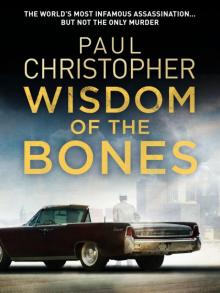 Wisdom of the Bones
Wisdom of the Bones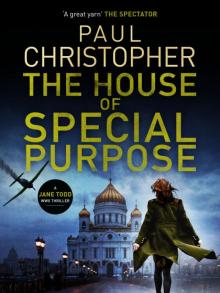 The House of Special Purpose
The House of Special Purpose The Second Assassin
The Second Assassin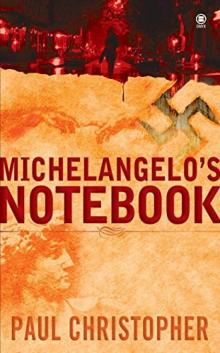 Michelangelo's Notebook
Michelangelo's Notebook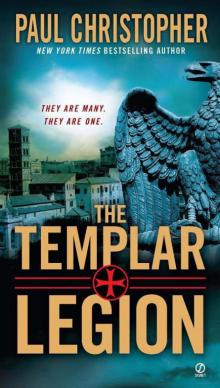 Templar Legion
Templar Legion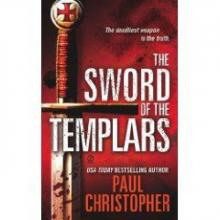 The Sword of the Templars t-1
The Sword of the Templars t-1 Red Templar
Red Templar The Aztec Heresy
The Aztec Heresy The Templar Legion
The Templar Legion Rembrandt's Ghost
Rembrandt's Ghost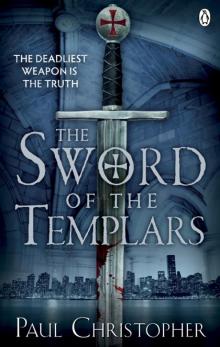 Sword of the Templars
Sword of the Templars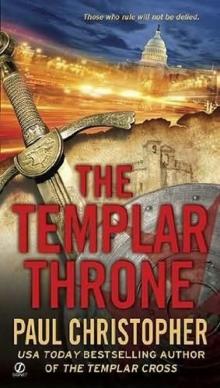 The Templar throne t-3
The Templar throne t-3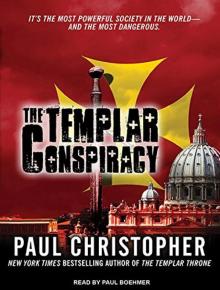 The Templar Conspiracy
The Templar Conspiracy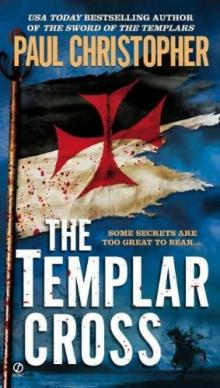 The Templar Cross t-2
The Templar Cross t-2 The Templar Legion t-5
The Templar Legion t-5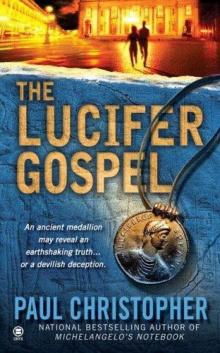 The Lucifer Gospel
The Lucifer Gospel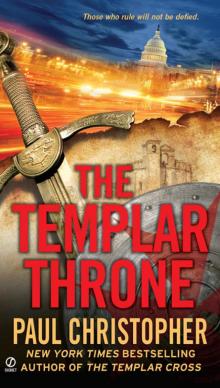 Templar Throne
Templar Throne Michelangelo_s Notebook fr-1
Michelangelo_s Notebook fr-1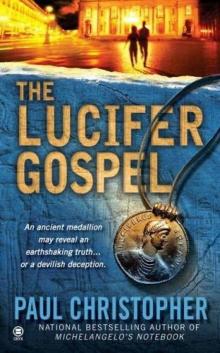 The Lucifer Gospel fr-2
The Lucifer Gospel fr-2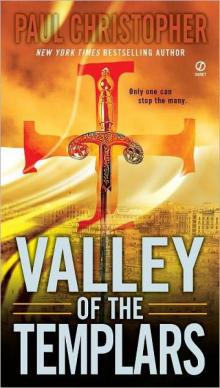 Valley of the Templars ts-7
Valley of the Templars ts-7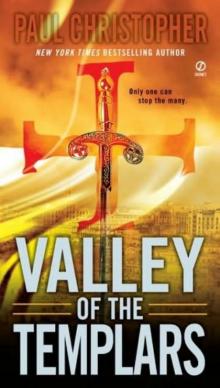 Valley of the Templars
Valley of the Templars Templar Cross
Templar Cross The Templar Throne
The Templar Throne The Templar Cross
The Templar Cross Lost City of the Templars
Lost City of the Templars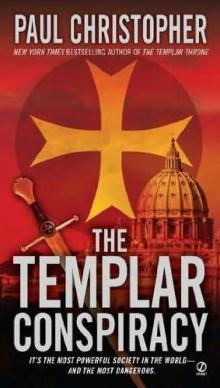 The Templar conspiracy t-4
The Templar conspiracy t-4 Templar Conspiracy
Templar Conspiracy